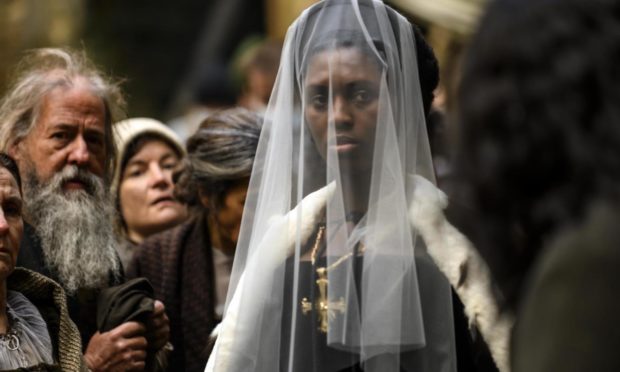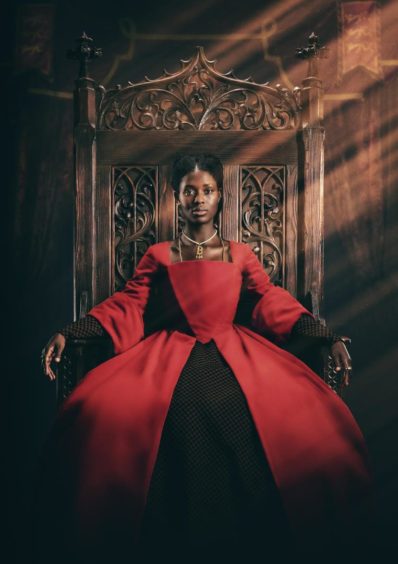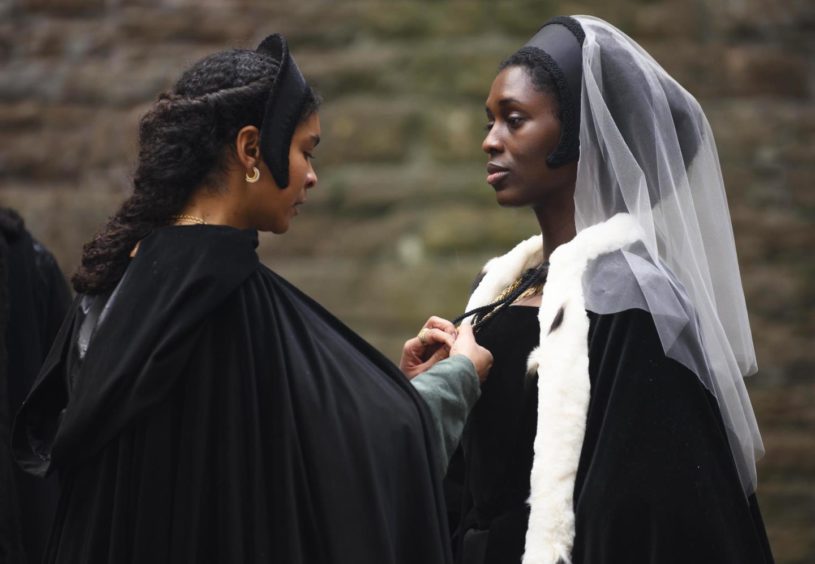There are few regal figures in British history who faced so much rumour, speculation, and gossip than Anne Boleyn.
Centuries after her reign, certain myths and legends remain stuck to her name. During a fateful marriage to Henry VIII as his second wife, Anne’s inability to birth him a male heir seemed to seal her fate, with some stories invented in order for the King to have her removed so he could wed Jane Seymour.
As the story goes, Anne was a serial adulterer, even taking her brother George as a lover; she had an extra finger on her right hand; practiced sorcery; and plotted to have Henry killed.
A spiky, no-nonsense monarch
In a new three-part psychological drama from Channel 5, Anne Boleyn’s name is being rescued from such a permanent blaze of bad publicity.
As reimagined by first-time TV writer Eve Hedderwick Turner and Scottish director Lynsey Miller (previous credits include Deadwater Fell and Doing Money), Anne takes form in Jodie Turner-Smith, a formidable actress who brings gravitas and humanity to the role.
Her Anne is a spiky, no-nonsense monarch who doesn’t bend to be likeable (she demands that some noisy pheasants be exterminated, and is curt to many in the Tudor court), but is ultimately vanquished by a cruel husband who cared more about his own legacy than the woman (and women) he married.
“There’s so much about Anne’s legend that people believe, and we’ve seen all these things portrayed in popular culture,” says Jodie who co-starred in 2020 British movie Queen & Slim alongside Daniel Kaluuya.
“For the most part we’ve seen her story told through the lens of other people around her. But this time we are trying to tell a more human story about this figure who really was just a woman trying to survive in her time and, in many ways, was a woman before her time.”
The final months of Anne Boleyn’s life
The series explores the final months of Anne Boleyn’s life in 1536 from her perspective, as she aims to secure a future for her daughter (later to be crowned Elizabeth I) and to challenge the powerful patriarchy closing in around her, led by the scheming Thomas Cromwell (played here by Barry Ward) with Henry (Mark Stanley) as its figurehead.
When we first meet her, Anne has suffered two miscarriages but is now pregnant with a child that Henry insists must be male. The pregnancy reaches a devastatingly sad and early termination, with Henry mentally and physically moving on to his next wife, the far meeker Jane Seymour (Lola Petticrew, recently seen in Irish drama Three Families).
“As history is written by the victor, Anne’s been branded everything from an enigma, to a witch, a sexual temptress, a cold opportunist, and a traitor,” notes Lynsey Miller.
“But the crux of it was that she challenged the status quo, and that terrified those whose positions were dependent on maintaining it and denying equal opportunity. We see those same struggles today.”
When Jodie Turner-Smith was cast in the role, the internet blew up in scandalous fervour, annoyed that a black actress was playing a white monarch.
“People get very mixed up between history and historical drama,” states Dan Jones, executive producer and historical advisor on the series.
Historical drama vs history
“That’s understandable because there is a huge overlap between them: history is about rooting objectively for what happened, but historical drama is different. It gives you a greater license to indulge in a conversation between past and present.
“Of course, you root your drama in things that actually happened; but the whole purpose of doing historical drama is to depart somewhat from the truth. Otherwise we would just be making documentaries.”
For those who remain unconvinced by the thought of such a portrayal, they should be swayed after a few moments of Anne Boleyn.
Jodie Turner-Smith inhabits the role with such a mix of strength and vulnerability that it soon becomes difficult to imagine anyone else in the part.
“Too often we’ve seen the story of Anne Boleyn reduced to her through the eyes of Henry,” adds Dan.
“In the old rhyme, ‘Divorced, Beheaded, Died’, her only function as a character is to come into Henry VIII’s life and then have her head chopped off, before another wife rolls in. I think that’s a profoundly unfair way of looking at this remarkable woman’s story.”
- Anne Boleyn airs on Channel 5, Tuesday June 1–Thursday June 3, 9pm.


